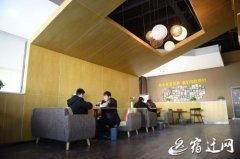Hartman coffee beans single bean red wine treatment what is the flavor description characteristics of planting information

For professional baristas, please follow the coffee workshop (Wechat official account cafe_style)
Introduction of Panamanian coffee beans, Panamanian coffee bean red wine treatment
Unique coffee
The microclimate of the Panamanian highlands is the most important resource that makes Panamanian coffee unique.
The most important resource that makes Panamanian coffee unique is its microclimate. The east-west environment of the Republic of Panama converges cold air over 6500 feet through the Central Mountains, creating a variety of microclimates in the Boquete and Volc á n-Candela regions, making it a major source of Panamanian coffee. These unique coffees are grown in nutritious and balanced land located in the Baru volcano region.
Panamanian coffee is classified and numbered into small batches, which are designed to have a small capacity for optimal management, and classification numbers allow buyers to understand and track the entire process.
Because of its small quantity, Panamanian coffee products are based on special coffee. The country provides its high-quality products to specialized stores around the world, such as Denmark, Britain, Greece, Norway, Sweden, South Korea, Japan, Taiwan and the United States.
Planting environment
Panama is a small country located in the center of the American continent. The waters of the Atlantic and Pacific oceans flood its beaches.
Panama is located at 9 degrees north latitude, the meeting point of the Central Mountains, where Mount Baru, one of the highest volcanoes in Central America, is located.
The Baru volcano has an altitude of more than 11400 feet, and the land around it is rich in nutritious and fertile soil, providing sufficient conditions for the sowing and cultivation of coffee endemic to Panama.
The appropriate microclimate, soil, temperature and height of these highlands are suitable for sowing, planting and harvesting a variety of unique coffees. These coffees have jasmine, citrus, ripe fruit, berries, caramel, special sweetness, vanilla, chocolate and other flavors.
The BOQUETE region of Panama, located in the province of CHIRIQUI on the border with Costa Rica, is the home of Panama's famous GEISHA coffee and is famous for producing high-quality Arabica coffee. The Tedman & McIntyre (TEDMAN&MACINTYRE ESTATE) estate, located in the mountain area of Poggett 4000 feet above sea level, comes from the two earliest coffee families in Panama, the Tedman family and the McIntyre family. In 1925, Canadian fruit merchant Alexander McIntyre (ALEXANDER DUNCAN MACINTYRE), infected by his brother Joseph, came to Poggett to settle down, married ANGELA ROSAS in the same year, bought an estate named "LA CAROLINA" and began to grow coffee. Their descendants still own the estate and become one of the most famous coffee farms in the area.
The characteristics of Panamanian coffee:
Panama coffee is smooth, light and sour, and its excellent thousand-week coffee beans are pure and distinctive.
Flavor: full granules and good quality
Suggested baking method: medium baking
Panamanian coffee bean red wine treatment
The origin of the "red wine treatment" comes from its treatment process, and the "red wine flavor treatment" is named from its treatment results-full alcohol thickness, red wine fermentation flavor, low acidity and excellent sweetness. (The result is a more full-bodied, slightly winey, sweeter coffee with less acidity.)
So what is the process of "red wine flavor treatment"? In fact, strictly speaking, the way of treatment is more similar to that of solarization, or "efficient solarization". Pick the fully ripe coffee fruit and use industrial wind equipment to increase the air flow in the coffee bean drying space and accelerate the fruit drying.
The red wine treatment brings surprising and interesting ripe grape flavors, as well as delightful sweet and sour berries.
It deserves to be a must-have for sweet and sour.
Important Notice :
前街咖啡 FrontStreet Coffee has moved to new addredd:
FrontStreet Coffee Address: 315,Donghua East Road,GuangZhou
Tel:020 38364473
- Prev

Latin American coffee beans grade classification style flavor description characteristics planting area
Professional barista exchanges please follow the coffee workshop (Wechat official account cafe_style) Columbia (Colombian) aroma 3.5 minutes brightness 4.5 minutes mellow 3.5 minutes flavor 4.5 minutes aftertaste 4.5 points suitable for roasting degree: Medial/City/Full city/Espresso/Dark/French Columbia beans are one of the few coffee beans that range from shallow roasting to very deep roasting, from light roasting to clean
- Next

Flavor description of graded Ginseng varieties in 90 + Ginseng planting area
For professional baristas, please follow the coffee workshop (Wechat official account cafe_style) Kemgin, ginseng W2 Level 7 Origin: 90 + Ethiopia Wellega (Waliga), Sidama (Hidamo) and Yirgacheffe (Yega Snow) producing areas. Altitude: 17502000m. Treatment: washing. Taste characteristics: White peach, lime, melon, ginseng, horn
Related
- Detailed explanation of Jadeite planting Land in Panamanian Jadeite Manor introduction to the grading system of Jadeite competitive bidding, Red bid, Green bid and Rose Summer
- Story of Coffee planting in Brenka region of Costa Rica Stonehenge Manor anaerobic heavy honey treatment of flavor mouth
- What's on the barrel of Blue Mountain Coffee beans?
- Can American coffee also pull flowers? How to use hot American style to pull out a good-looking pattern?
- Can you make a cold extract with coffee beans? What is the right proportion for cold-extracted coffee formula?
- Indonesian PWN Gold Mandrine Coffee Origin Features Flavor How to Chong? Mandolin coffee is American.
- A brief introduction to the flavor characteristics of Brazilian yellow bourbon coffee beans
- What is the effect of different water quality on the flavor of cold-extracted coffee? What kind of water is best for brewing coffee?
- Why do you think of Rose Summer whenever you mention Panamanian coffee?
- Introduction to the characteristics of authentic blue mountain coffee bean producing areas? What is the CIB Coffee Authority in Jamaica?

